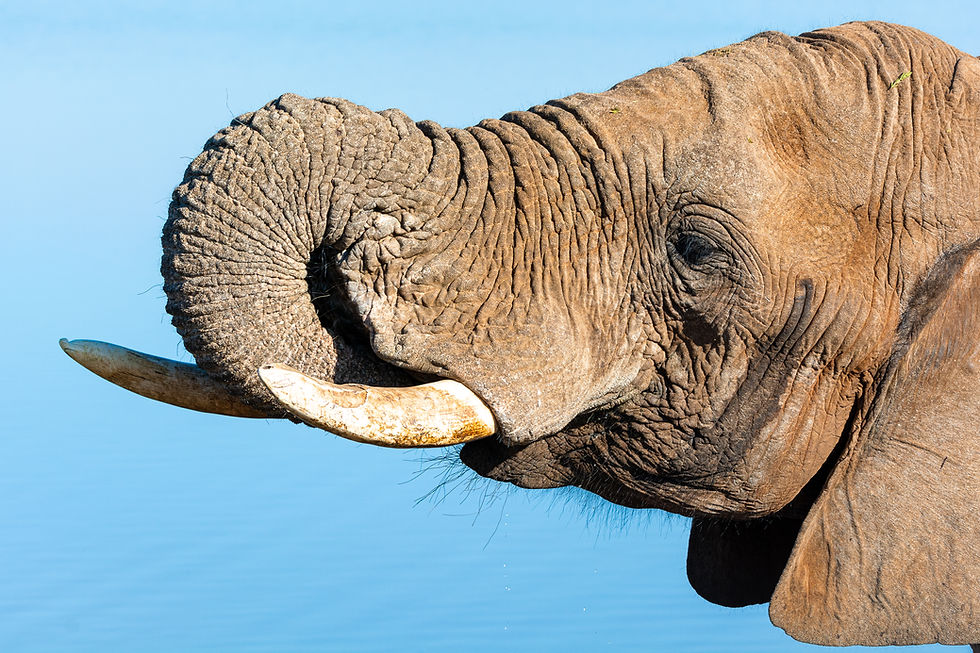
Visiting the Kruger National Park is a dream for many wildlife enthusiasts and families alike. To make your trip unforgettable, we've compiled the top 10 travel tips to ensure you get the most out of your safari adventure. Read further to find out everything from how to spot animals to where to go!
Tip 1: Finding Animals
Whenever anyone is planning a trip to Kruger, one of the biggest questions on their mind is how to find animals. Wherever you are in the park, there is always something to see. Narrow your search to a smaller area and plan your route in advance. Drive slowly and keep your eyes peeled; it is very easy to drive past a leopard hiding in a bush (believe me, I know)! Everyone in Kruger is there for the same purpose, to see animals. So don't be afraid to ask people in camps or on drives what they've seen. Many of my best sightings have come from the advice of others.
Tip 2: Self-Drive vs. Guided Tours
When planning a Safari holiday, it is important to decide whether you want to be your own guide or go with an expert. This very much depends on your own preferences. Self-drive safaris offer flexibility and the thrill of exploring at your own pace. You decide where you want to go and how what you want to stop for. Sometimes the best sightings are those which you find yourself on a quiet dirt road in the middle of nowhere. In contrast, guided tours provide expert knowledge and increase your chances of seeing elusive animals. Both options are rewarding, and you will always see amazing sightings regardless of your choice. I often like to balance out the two by driving around myself with a couple of sunset or night guided tours. This will give you the best of both worlds.

Tip 3: When to Go
Kruger is magnificent year-round, and different seasons offer different things. During the dry winter months (May to September), the vegetation is sparse which makes it easier to spot wildlife through the thickets and grass. At this time of year the animals often associate around permanent waterholes, so sticking around a dam can offer some fantastic game viewing. The colder temperatures also mean animals are more active throughout the day. From October to April, the flora comes to life with trees and flowers at their best. This season offers lush landscapes and lots of baby animals, but can be hot and rainy. The heat means that for much of the day the wildlife is resting under the shadows of bushes and trees until the temperature comes down. Sunrise and sunset can be particularly fruitful at this time of year when the temperature isn't as high.
Tip 4: Accommodation Options
Kruger offers various accommodations, from luxury lodges to budget-friendly campsites. For a more immersive experience, consider staying inside the park. Book well in advance, especially during peak seasons.
Tip 5: Booking in Advance
This tip follows on from tip 4. Make sure you make all your reservations well in advance, especially during peak seasons. This means you can secure the best spots and rates. Book your lodges, campsites, and guided tours early. Popular accommodations can fill up quickly, so plan ahead to avoid disappointment.
Tip 6: What to Pack
Pack light, breathable clothing, a wide-brimmed hat, sunscreen, insect repellent, binoculars, and a good camera. Don’t forget comfortable shoes and a first-aid kit. For families, bring activities to keep kids entertained during downtime.
Tip 7: Wildlife Viewing Tips
Early mornings and late afternoons are the best times for wildlife sightings. Be patient and quiet; sudden movements can scare animals away. Use binoculars to spot distant creatures, and stop regularly to scan the bush. Also pay attention to signs like tracks and sounds. Alarm calls from impala, monkeys or birds can give away the presence of a leopard long before you spot it yourself.
Tip 8: Photography Tips
Use a zoom lens to capture close-up shots without disturbing wildlife. Early morning and late afternoon light provide the best conditions for photography. Cloudy conditions and moody weather can help you add a sense of drama to your photos. Be ready to shoot quickly though, as animals can be unpredictable and sightings often happen so fast. Make sure your camera is set on a fast shutter speed to be able to take photos quickly of sudden action.
Tip 9: Conservation and Respect
Respect the park’s rules and regulations to protect the environment and its inhabitants. Kruger is an incredible wild place, so make sure to help keep it pristine and beautiful. Avoid littering and follow guidelines for wildlife interactions. Be aware of the animal's welfare, so don't pressure them with your vehicle, follow the speed limits and be quiet at sightings. Supporting the park's conservation efforts by learning about the park’s initiatives and contributing when possible can help preserve the park we all love.
Tip 10: Fun and Educational Activities
To take your game drives to the next level, bring some fun games for you and your family to play. Our Safari Bingo is a perfect addition to your trip and it is great for anyone, regardless of age or experience. Turn your drives into a fun competition and learn about. the animals you see These activities can enhance your understanding and appreciation of the park’s ecosystem.

Conclusion
With these tips, you’re well on your way to a memorable and successful visit to Kruger National Park. Ultimately there is no right way to visit the Kruger. Be ready for anything and have an open mind. Appreciate the little things rather than chasing the Big Five only, and most of all, have fun. Embrace the adventure, respect the wildlife, and enjoy the beauty of one of Africa’s most iconic destinations.
Have any tips or experiences to share? Drop a comment below!
Happy safari!

Comments